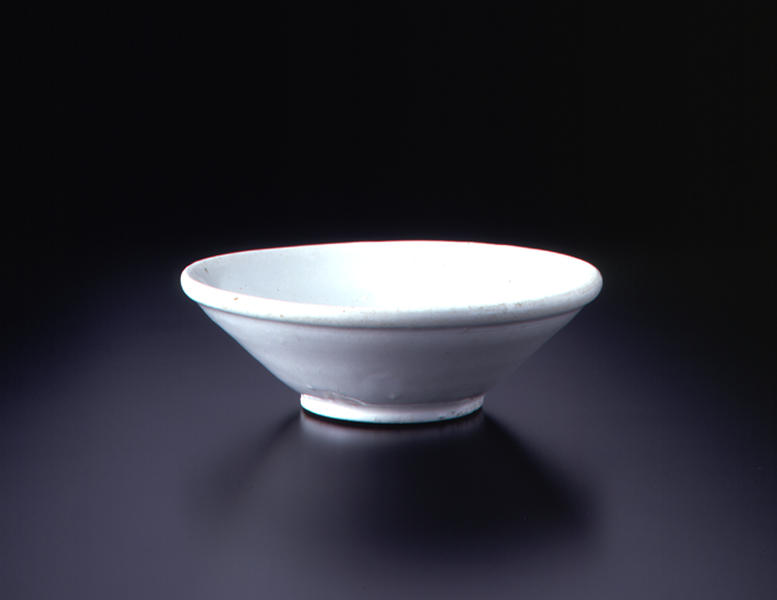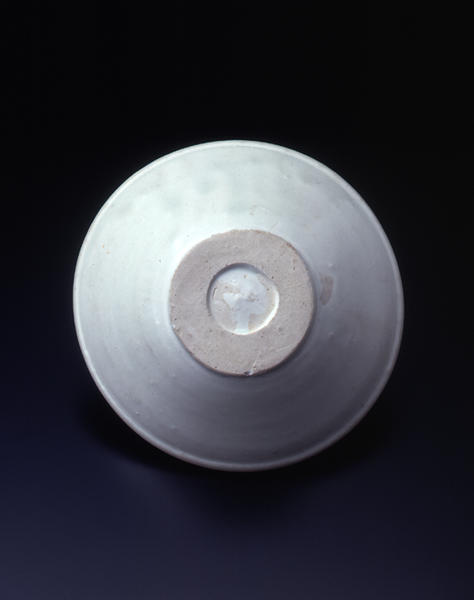Bowl with Rolled Rim
- Xingzhou ware
- China, Tang period
- 9c
- White porcelain
- H-4.5 W-15
Catalogue Entry
The term white ware is used here to refer to a white‐bodied stone ware or semi‐porcelainous ware which is fired with either a transparent glaze or a semi‐transparent, white glaze. White wares were first fired in China during the Northern Dynasty of the period of Northern and Southern Dynasties, and an increased demand during the Tang dynasty led to their spread throughout China. Two bowls excavated from the tomb dated 858, set the standard for white wares of the Late Tang dynasty. The present bowl is a typical Late Tang white ware bowl with essentially the same formation style as that seen on one of the excavated tomb bowls. The rim of the Miho bowl is turned back into an everted rim and it has a diagonal silhouette formed from the almost straight line expansion of the torso. The body clay is white and is coated in a slightly bluish tinged white glaze. Overall the work has been well fired. The base has an open‐center foot, and while the bottom edges of the foot are unglazed, the center of the foot has been glazed. The bowl has a symmetrical, well arranged beauty.

